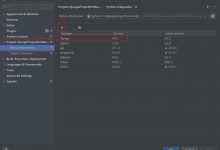//【时间获取及格式化】//获取当前时间now_time := time.Now()fmt.Printf(\"Now_time=%v,数据类型:%T \\n\", now_time, now_time)//通过now获取年月日时分秒fmt.Printf(\"年=%v\\n\", now_time.Year())fmt.Printf(\"月=%v\\n\", now_time.Month()) //默认是英文的月份fmt.Printf(\"月=%v\\n\", int(now_time.Month())) //加int转换为数字fmt.Printf(\"日=%v\\n\", now_time.Day())fmt.Printf(\"时=%v\\n\", now_time.Hour())fmt.Printf(\"分=%v\\n\", now_time.Minute())fmt.Printf(\"秒=%v\\n\", now_time.Second())//格式化日期时间①fmt.Printf(\"当前时间 %d-%d-%d %d:%d:%d \\n\", now_time.Year(), int(now_time.Month()), now_time.Day(), now_time.Hour(), now_time.Minute(), now_time.Second())//把格式化好的时间返回给一个变量,然后输出date_now := fmt.Sprintf(\"当前时间 %d-%d-%d %d:%d:%d \\n\", now_time.Year(), int(now_time.Month()), now_time.Day(), now_time.Hour(), now_time.Minute(), now_time.Second())fmt.Printf(\"date:%v\\n\", date_now)//格式化日期时间②//2006/01/02 15:04:05 这里必须数字一个不差的写//据说是因为golang设计者在这个时间有设计golang的想法fmt.Printf(now_time.Format(\"2006/01/02 15:04:05\\n\"))fmt.Printf(now_time.Format(\"2006/01/02\\n\"))fmt.Printf(now_time.Format(\"15:04:05\\n\"))//【时间常量应用】// 时间单位换算// const {// Nanosecond Duration = 1 //纳秒// Microsecond = 1000 * Nanosecond //微秒// Millisecond = 1000 * Microsecond = 1000000(1000 * 1000) * Nanosecond //毫秒// Second = 1000 * Millisecond = 1000000(1000 * 1000) * Microsecond = 1000000000(1000 * 1000 * 1000) * Nanosecond //秒// Minute = 60 * Second //分钟// Hour = 60 * Minute //小时// }time.Sleep(time.Second) // 每隔1秒time.Sleep(time.Millisecond * 100) // 每隔0.1秒
golang时间函数
未经允许不得转载:爱站程序员基地 » golang时间函数
 爱站程序员基地
爱站程序员基地


